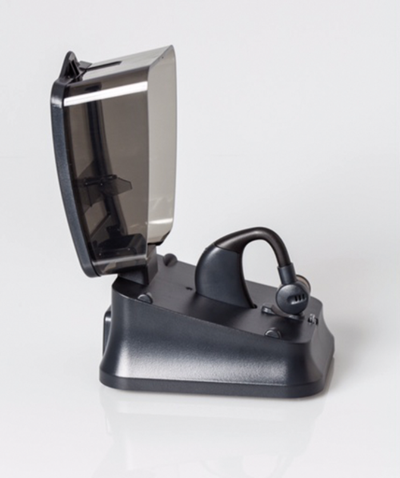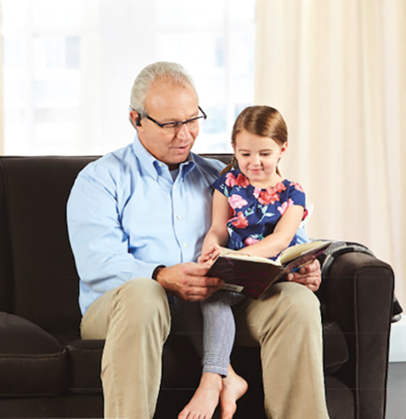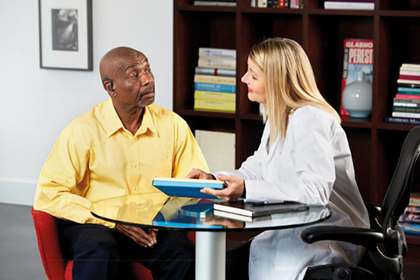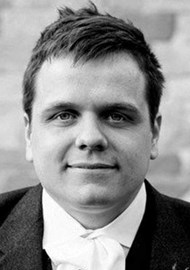Parkinson’s disease often results in a characteristically quiet voice. But a new device is offering hope to patients who are struggling to be heard.
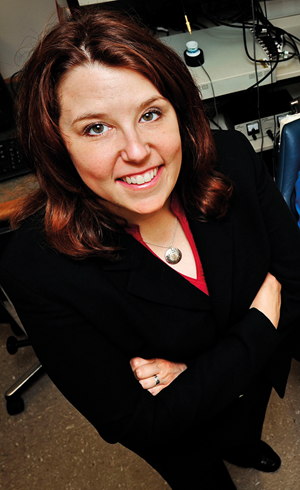
Jessica E Huber.
Tell us, what is the SpeechVive?
The SpeechVive is a wearable device designed to improve communication in people with Parkinson’s disease.
I developed the idea for the SpeechVive as a result of research completed on my first grant from the National Institutes of Health. I completed the first treatment efficacy study of the SpeechVive on my second grant from the National Institutes of Health. We decided to move forward with commercialisation based on the positive results during that first study.
We have completed two further studies, all demonstrating good efficacy for the SpeechVive in people with Parkinson’s disease.
SpeechVive device in charger.
How does it work and what are the principles it’s based on?
The SpeechVive capitalises on the Lombard effect. This is the reflex that causes us to speak louder, clearer, and slower in the presence of background noise. All adults demonstrate this response. People with Parkinson’s disease have difficulty with speech loudness, clarity, and rate. The SpeechVive has the potential to improve all three domains via the Lombard effect.
What sort of problems do patients with Parkinson’s disease experience with their voice?
Most will have voice difficulties which involve reduced speech intensity, a breathy or whispery voice, or a hoarse voice. Over half will also have articulation difficulties including slurred speech and fast speech rate.
“Sensing the voice to activate the noise in a design that was easy to use and not terribly visible was the toughest part of the design.”
SpeechVive device can be used to communicate with loved ones.
Who would benefit from the SpeechVive?
We are still working to refine the clinical characteristics most likely to lead to improvements with the SpeechVive. Generally, an individual needs to show the Lombard effect on testing, so they need to respond to the background noise by increasing their vocal intensity (loudness).
The need to want to communicate, the willingness to wear the device daily, and the willingness to practise speaking with the device on are all essential.
What were the biggest challenges in designing the product?
Sensing the voice to activate the noise in a design that was easy to use and not terribly visible was the toughest part of the design. In the first study, we used an accelerometer worn on the neck. However, the accelerometer was very noticeable and required a cord to run to the device, which sat at the waist. Study participants unanimously requested a smaller device, without cords, and without an accelerometer on the neck.
“There are no other devices that elicit the Lombard effect to improve communication.”
How has it developed since the original idea?
It has changed a lot. We have made the device much smaller and removed all external wires. Now it is self-contained and sits on the ear, like a Bluetooth headset. We have significantly improved the firmware inside the device and the software used to set the device for each patient.
Are there any limitations of the SpeechVive?
The SpeechVive device can only provide therapy if the person talks with the device on. Often we assign reading aloud exercises for 30 minutes per day for five days per week with the SpeechVive on to elicit more talking time with the device on. We do not have any hard and fast limits or exclusions, other than someone who does not meet the above criteria.
SpeechVive device can be used to communicate with healthcare providers.
What are the more traditional treatment alternatives for these patients?
The most common speech treatment for people with Parkinson’s disease is LSVT LOUD (www.lsvtglobal.com). This is a behavioural therapy performed by trained and certified speech-language therapists. The speech therapist meets with the patient for one hour, four days per week for four weeks, and home practice is assigned daily. It is an intensive therapy. The speech pathologist teaches the person with Parkinson’s disease to monitor their loudness and to speak louder. This therapy has been shown (in peer-reviewed published literature) to improve vocal intensity (loudness), speech clarity, voice, and communication effectiveness.
Are you aware of any other devices that act on similar principles?
There are no other devices that elicit the Lombard effect to improve communication. There is a device called the SpeechEasy that provides altered auditory feedback to speakers, mainly to treat stuttering. In the SpeechEasy, the person’s speech is played back to them at a time delay and at an altered frequency.
Do you have any research or patient feedback for the use of the SpeechVive?
We have three studies in peer-reviewed journals demonstrating that the SpeechVive improves vocal intensity, articulatory clarity and physiologic support for speech. Additionally, we have presented two further studies and these are currently being prepared for publication.
“The SpeechVive improves vocal intensity, articulatory clarity and physiologic support for speech.”
In general, approximately 90% of patients who try the device show some degree of benefit in increased vocal intensity, normalised speech rate or improved speech clarity. The SpeechVive results in increased loudness for 75% of patient participants and improved speech rate for 66% of patients. Further, we have demonstrated improvements in speech clarity and communication effectiveness. We have also seen improvements in respiratory and laryngeal patterns suggesting reduced effort for speech and better efficiency in using the speech mechanism to communicate after wearing the device for at least eight weeks.
Interviewed by Neil Giblett.
‘Spotlight on Innovation’ is an informative section to provide insight and discussion on recent advances in technology and research and does not imply endorsement by ENT & Audiology News.

